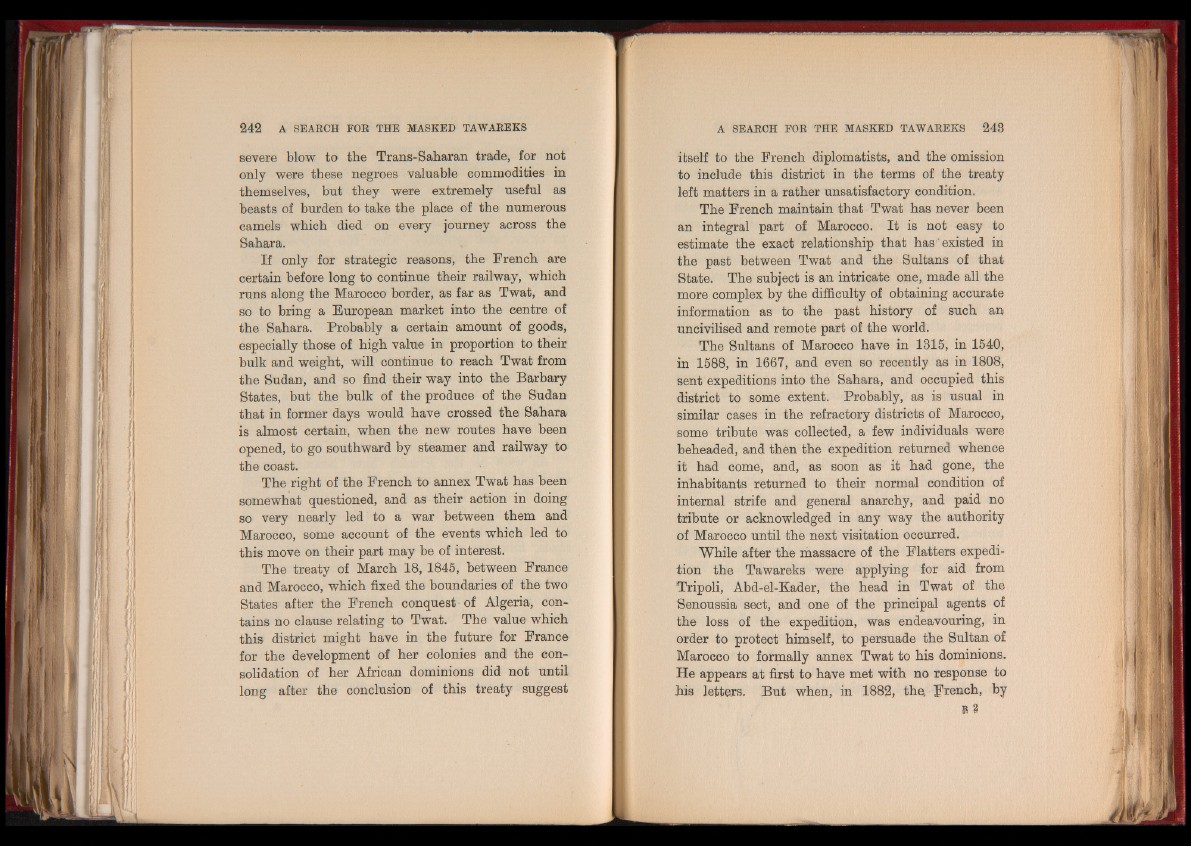
severe blow to the Trans-Saharan trade, for not
only were these negroes valuable commodities in
themselves, but they were extremely useful as
beasts of burden to take the place of the numerous
camels which died on every journey across the
Sahara.
If only for strategic reasons, the French are
certain before long to continue their railway, which
runs along the Marocco border, as far as Twat, and
so to bring a European market into the centre of
the Sahara. Probably a certain amount of goods,
especially those of high value in proportion to their
bulk and weight, will continue to reach Twat from
the Sudan, and so find their way into the Barbary
States, but the bulk of the produce of the Sudan
that in former days would have crossed the Sahara
is almost certain, when the new routes have been
opened, to go southward by steamer and railway to
the coast.
The right of the French to annex Twat has been
somewhat questioned, and as their action in doing
so very nearly led to a war between them and
Marocco, some account of the events which led to
this move on their part may be of interest.
The treaty of March 18, 1845, between France
and Marocco, which fixed the boundaries of the two
States after the French conquest of Algeria, contains
no clause relating to Twat. The value which
this district might have in the future for France
for the development of her colonies and the consolidation
of her African dominions did not until
long after the conclusion of this treaty suggest
itself to the French diplomatists, and the omission
to include this district in the terms of the treaty
left matters in a rather unsatisfactory condition.
The French maintain that Twat has never been
an integral part of Marocco. It is not easy to
estimate the exact relationship that has existed in
the past between Twat and the Sultans of that
State. The subject is an intricate one, made all the
more complex by the difficulty of obtaining accurate
information as to the past history of such an
uncivilised and remote part of the world.
The Sultans of Marocco have in 1315, in 1540,
in 1588, in 1667, and even so recently as in 1808,
sent expeditions into the Sahara, and occupied this
district to some extent. Probably, as is usual in
similar cases in the refractory districts of Marocco,
some tribute was collected, a few individuals were
beheaded, and then the expedition returned whence
it had come, and, as soon as it had gone, the
inhabitants returned to their normal condition of
internal strife and general anarchy, and paid no
tribute or acknowledged in any way the authority
of Marocco until the next visitation occurred.
While after the massacre of the Flatters expedition
the Tawareks were applying for aid from
Tripoli, Abd-el-Kader, the head in Twat of the
Senoussia sect, and one of the principal agents of
the loss of the expedition, was endeavouring, in
order to protect himself, to persuade the Sultan of
Marocco to formally annex Twat to his dominions.
He appears at first to have met with no response to
his letters. But when, in 1882, thes, French, by